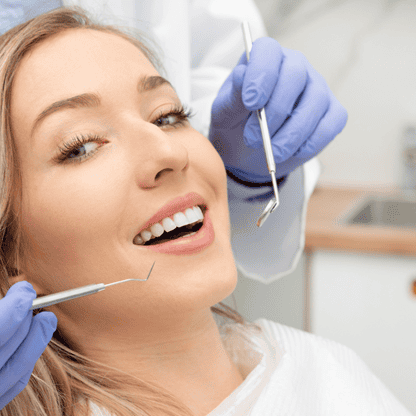Invisalign vs. OrthoFX: Which Clear Aligner Is Right for You?

The desire for a straight, confident smile has never been more realistic or accessible. For decades, metal braces were the only way to correct crooked or misaligned teeth. While effective, they were uncomfortable, noticeable, and disruptive to daily life. The introduction of clear aligner technology changed everything. These nearly invisible trays allow adults and teens to improve their smiles without wires or brackets.
Today, Invisalign and OrthoFX are two of the most recognized aligner systems. Both are designed to gradually shift teeth into alignment. Both are discreet, convenient, and customized for each patient. But despite their similarities, they are not identical. The biggest difference between OrthoFX and Invisalign is wear time. Invisalign requires 20–22 hours of daily wear, while OrthoFX’s proprietary polymer allows many patients to achieve the same results with night-only wear.
That single difference changes the entire patient experience. Let’s look closely at both systems, how they compare, and why wear time should play a central role in your decision.
Invisalign: The Longstanding Standard
Invisalign has been in use since the late 1990s. With decades of case studies and a large provider network, it has become the clear aligner brand most people recognize.
Materials and Design
Invisalign aligners are made from SmartTrack, a patented thermoplastic designed to deliver continuous, gentle pressure. The trays are customized to fit snugly and guide tooth movement with precision.
Treatment Process
After an initial consultation and digital scan, your provider creates a step-by-step treatment plan using ClinCheck 3D software. This software maps each tooth’s movement, giving you a preview of your results. Once treatment begins, you receive a series of trays that must be worn 20 to 22 hours a day.
Aligners are changed every one to two weeks, and office visits typically occur every six to eight weeks. Compliance is critical. Missing hours can slow progress, leading to longer treatment times.
Who It Suits Best
Invisalign is a solid choice for patients with mild to complex dental cases, especially those disciplined enough to keep aligners in nearly all day. If you work from home or have a routine that allows full-time wear, Invisalign may fit seamlessly into your lifestyle.
OrthoFX: The Wear-Time Alternative
OrthoFX entered the market more recently but has quickly gained attention by addressing one of the biggest frustrations with clear aligners: the long wear schedule.
The Proprietary FXTetra Material
At the heart of OrthoFX is FXTetra, a multi-layer polymer engineered to apply effective, consistent force even during shorter wear times. Its design allows many patients to achieve full results while wearing aligners only at night, usually for 8–10 hours.
This distinction makes OrthoFX especially appealing to professionals, parents, and students who don’t want aligners in during their busiest hours.
Treatment Process
Like Invisalign, OrthoFX begins with a digital scan and a personalized treatment plan. Patients receive a series of custom aligners, often with weekly tray changes. Remote monitoring via the FXOnTrack platform reduces the need for in-person visits, though periodic checkups remain necessary.
The defining feature is night-only wear. Instead of planning meals, conversations, or work presentations around aligners, patients can wear them exclusively while sleeping.
Who It Suits Best
OrthoFX is designed for patients who value flexibility. If you dislike the idea of constant daytime wear or you want an orthodontic solution that does not disrupt eating, drinking, or speaking during the day, OrthoFX may be the better option.
Comparing Treatment Time
When comparing OrthoFX vs Invisalign, wear time directly affects treatment length.
- Invisalign: Typically 12–18 months depending on case complexity. Progress requires 20–22 hours of daily wear. Less compliance leads to slower results.
- OrthoFX: Some patients complete treatment in a similar or shorter time frame. Weekly tray changes and FXTetra’s efficiency support faster progress. The ability to wear aligners only at night removes one of the main obstacles to compliance.
For many patients, the convenience of night-only wear outweighs the slight variability in treatment time.
Also Read: What do Dentists in Beverly Hills Recommend—Invisalign or OrthoFX?
Comfort and Day-to-Day Lifestyle
Aligners need to fit your lifestyle, not the other way around.
Invisalign Comfort: SmartTrack material is smooth and snug, but long hours of wear mean frequent removal for meals and drinks. That constant handling can be inconvenient, especially in public settings.
OrthoFX Comfort: FXTetra material combines a softer inner layer for comfort with a stronger outer layer for control. Because trays are usually worn only at night, you avoid daytime hassles like removing them before eating or worrying about speech.
For patients in careers that require frequent speaking, networking, or presentations, OrthoFX’s wear-time advantage often makes daily life easier.
Aesthetic Considerations
Both Invisalign and OrthoFX aligners are nearly invisible when worn. Patients value this feature because it avoids the self-consciousness associated with metal braces.
One subtle difference lies in daily wear. Invisalign trays, worn almost full time, may be more prone to staining if not cared for diligently. OrthoFX, worn only at night, faces less exposure to food and drink, often keeping trays clearer throughout treatment.
For patients seeking the best clear aligners in Beverly Hills, where aesthetics are paramount, this is a key consideration.
Maintenance and Care
Both systems require aligners to be cleaned daily. For Invisalign, frequent removal for meals increases handling, making hygiene a constant focus. OrthoFX, worn at night, typically involves less frequent handling, simplifying care routines.
Both companies provide guidelines for cleaning, storage, and replacement if trays are lost or damaged. OrthoFX’s subscription model often covers refinements and retainers, which can simplify the overall process.
Cost and Value
The cost of Invisalign varies depending on treatment complexity, length, and provider. Patients should expect a range that reflects case difficulty.
OrthoFX generally offers an all-inclusive pricing model. This often covers aligners, refinements, monitoring, and post-treatment retainers. For patients concerned with budgeting, this transparency provides peace of mind.
Both treatments are often covered in part by dental insurance, and many providers, including Comfy Dental Studios, offer flexible payment plans and financing options to make the investment more manageable.
Clinical Effectiveness
Both systems are effective for mild to moderate alignment issues. Invisalign’s long history demonstrates success with more complex cases. OrthoFX’s strength lies in patient compliance. Many patients find night-only wear easier to maintain, which can increase overall treatment success.
Compliance is key. A system that fits into your lifestyle is more likely to deliver predictable results.
The Lifestyle Factor: Daytime vs Nighttime Wear
The real-world difference between Invisalign and OrthoFX comes down to how treatment integrates with daily life.
- Students: Wearing Invisalign trays in class may feel inconvenient, especially during meals or social events. OrthoFX’s night-only wear avoids these conflicts.
- Working Professionals: Meetings, presentations, and long workdays make 20- to 22-hour wear challenging. OrthoFX offers flexibility without disrupting professional life.
- Parents: Busy family schedules make aligner compliance harder. Night-only wear helps parents focus on their day without aligner-related interruptions.
When aligners adapt to your schedule instead of demanding constant attention, treatment success becomes easier.
Conclusion
Both Invisalign and OrthoFX are effective, discreet solutions for straightening teeth. The main distinction lies in wear time. Invisalign requires a full-day commitment, while OrthoFX allows many patients to complete treatment with night-only aligners thanks to its advanced FXTetra material.
For patients who prioritize flexibility and convenience, OrthoFX often provides a more manageable solution. For those with complex needs or who prefer the security of a long-established brand, Invisalign remains a strong choice.
The best way to make a final decision is to schedule a consultation at Comfy Dental Studios. We can help you compare treatment plans directly, allowing you to see which system aligns best with your goals and lifestyle.




